0 Introduction
The global race for innovation leadership in smart manufacturing is picking up among companies in Europe, the U.S., and Asia.All leading nations are trying to develop artificial intelligence(AI) strategies to help spur economic and technological growth through investment, talent development, scientific research, standards and regulations, and incentives. In March 2017, Canada was the first country in the world to announce a national strategy for AI, with a CAN$125 million investment over the next five years by the federal government[1]. In July 2017, China published its “Next Generation Artificial Intelligence Development Plan”, which aims to make China a world leader in AI, with a domestic AI industry worth almost ¥150 billion[2]. In November 2018, Germany launched a 5-point digital strategy termed as “AI—a Brand for Germany”, to become an AI leader by the year 2025[3]. In February 2019, the U.S. government launched an “American AI Initiative”, which aims to stimulate AI development[4]. Tab.1 lists an overview of national and regional AI strategies by various countries.
Tab.1 Overview of National and Regional AI Strategies
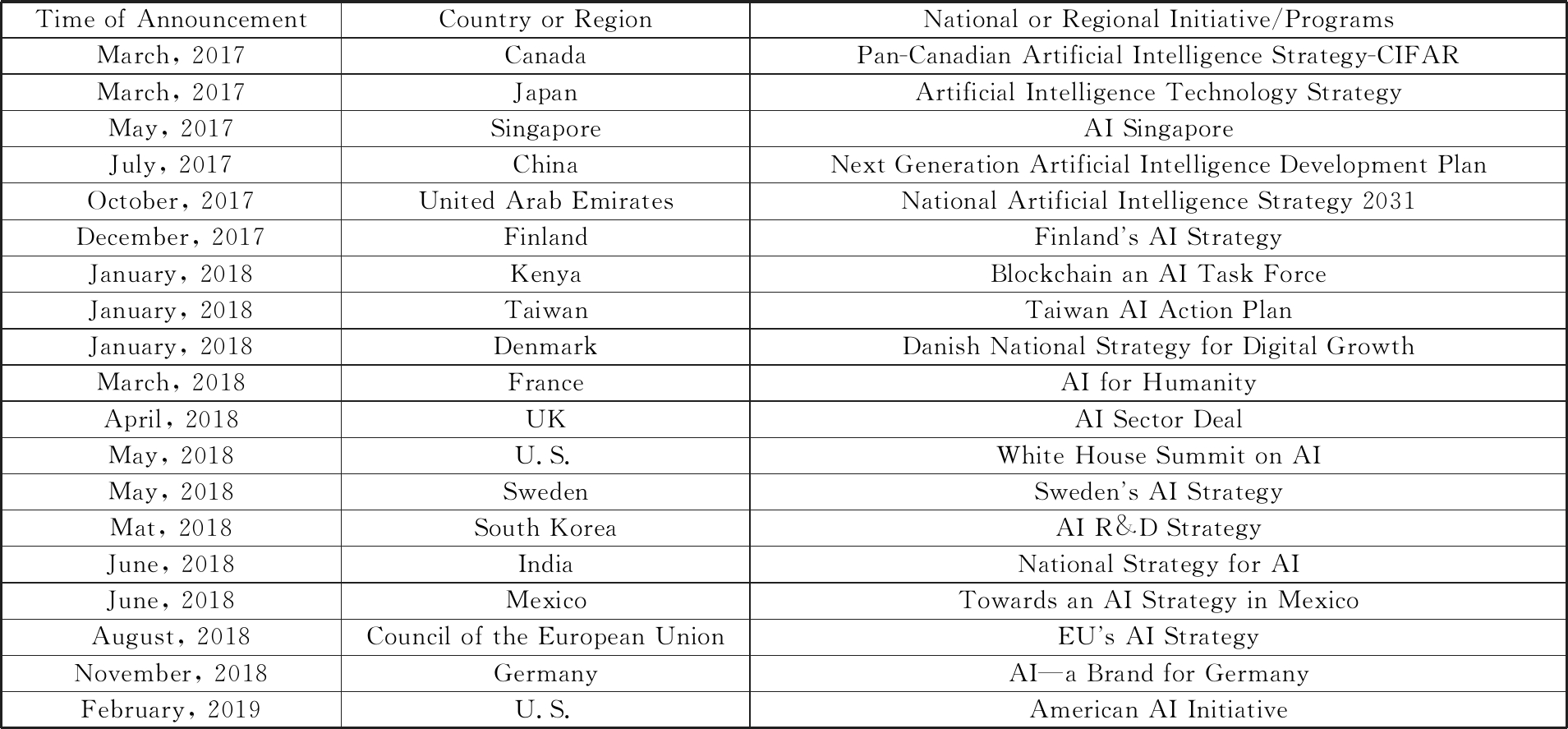
Time of AnnouncementCountry or RegionNational or Regional Initiative/ProgramsMarch, 2017CanadaPan-Canadian Artificial Intelligence Strategy-CIFARMarch, 2017JapanArtificial Intelligence Technology StrategyMay, 2017SingaporeAI SingaporeJuly, 2017ChinaNext Generation Artificial Intelligence Development PlanOctober, 2017United Arab EmiratesNational Artificial Intelligence Strategy 2031December, 2017FinlandFinlands AI StrategyJanuary, 2018KenyaBlockchain an AI Task ForceJanuary, 2018TaiwanTaiwan AI Action PlanJanuary, 2018DenmarkDanish National Strategy for Digital GrowthMarch, 2018FranceAI for HumanityApril, 2018UKAI Sector DealMay, 2018U.S.White House Summit on AIMay, 2018SwedenSwedens AI StrategyMat, 2018South KoreaAI R&D StrategyJune, 2018IndiaNational Strategy for AIJune, 2018MexicoTowards an AI Strategy in MexicoAugust, 2018Council of the European UnionEUs AI StrategyNovember, 2018GermanyAI—a Brand for GermanyFebruary, 2019U.S.American AI Initiative
These initiatives are enabling the modern-day manufacturing industries to undergo unprecedented transformation due to the adoption of disruptive Industry 4.0 technologies. These intelligent factories are equipped with smart sensors at every step of the manufacturing process which are producing large volumes of data. Manufacturers have started understanding the strategic importance of big data analytics, and therefore data is becoming a key factor for enhancing manufacturing competitiveness. By analyzing these enormous volumes of manufacturing data in real time, it provides an enhanced insight for business users to improve decision making in inproving manufacturing efficiency, predicting demand, automating production and optimizing inventory levels. However, with the existing disruptive Industry 4.0 technologies, the majority of the connected devices in manufacturing are still not able to make decisions without human intervention. Infusing intelligence into these physically connected things can exponentially increase the manufacturing cost. AI solutions are needed to fulfil the goals of a smart factory, which would make timely decisions and operate with minimal human involvement[5]. Smart manufacturing involves the integration of emerging technologies such as Industrial Internet of Things(IIoT)[6], big data analytics[7], cloud computing[8], and Cyber physical systems[9] to enable flexible and efficient operation of industries. The first three industrial revolutions were triggered by the introduction of mechanical, electrical, and digital technologies, respectively. AI is being predicted as the driver of a fourth industrial revolution known as “Industry 4.0”.
Despite the prospects of smart industris, many industries are hesitant to deploy AI in real-world applications. A general problem usually encountered in industrial applications is that two different engineers in an organization provide solutions to the same problem may have two different answers with different/same AI algorithms. Such a situation may not be accepted in industrial environments in that the industrial fields generally have three necessary characteristicses of systematism, rapidity and inheritance for efficient functioning. Other concerns also limit the use of AI in industrial environments. ①The majority of the successes in AI applications are primarily in image processing, natural language processing, social networks, robotics, and autonomous mobility. It must be noted that the structure and form of big data available from manufacturing equipments in industrial environment is quite different in comparison to the big data from the above-mentioned sources. Therefore, the direct applicability of the AI technologies established in the above fields is not straightforward. Hence, the success of AI in industrial applications has been limited. ②Though many manufacturers have initiated the adoption of AI in their activities, they lack a comprehensive technological roadmap and framework of how they could effectively embed AI in their strategies and businesses. For these reasons, there has not been enough evidence in terms of industrial successes to convince industries to embrace this technology. The initial adopters of AI are supposed to be stuck in “pilot purgatory” and are not able to succeed in building systematic capabilities. ③ Non-availability of standardized data is another issue as industrial machines and equipment report and log data in different formats. ④The non-availability of failure data is a major limitation or adoption of AI in the manufacturing industry. In practice, industries rarely allow running their machines to failure. Using machine learning models trained on censored or suspended equipments may hamper the reliability of machine health predictions. Moreover, in the majority of the manufacturing applications, it is difficult to identify a clear distinction between the collected data from healthy and abnormal conditions.
Since the application of AI in manufacturing requires a number of key foundational technologies and process innovations, LEE et al.[10-11] provided a systematic structure for the implementation of AI in industrial environments and coined the term as “Industrial AI”. Industrial AI is defined as “a systematic discipline, which focuses on developing, validating, and deploying various machine learning algorithms for industrial applications with a sustainable performance”[10-11]. The fundamental concept is the provision of on-demand manufacturing services to the end-users by optimally coordinating distributed manufacturing resources augmented by AI methodologies. It is expected to enable manufacturing systems to be fault-tolerant, on-demand and self-organizing with AI adoptions. LEE et al.[10-11] proposed four key enabling technologies for the implementation of Industrial AI in Industry 4.0-based manufacturing systems. Fig.1 illustrates that Industrial AI can realize smart and resilient industrial systems through four enabling technologies including data technology(DT), analytic technology(AT), platform technology(PT), and operations technology(OT). Unlike the conventional AI, Industrial AI is a method of system engineering that emphasizes how to build a combination of DT, AT, PT, and effective OT in order to solve the problem between different engineers.
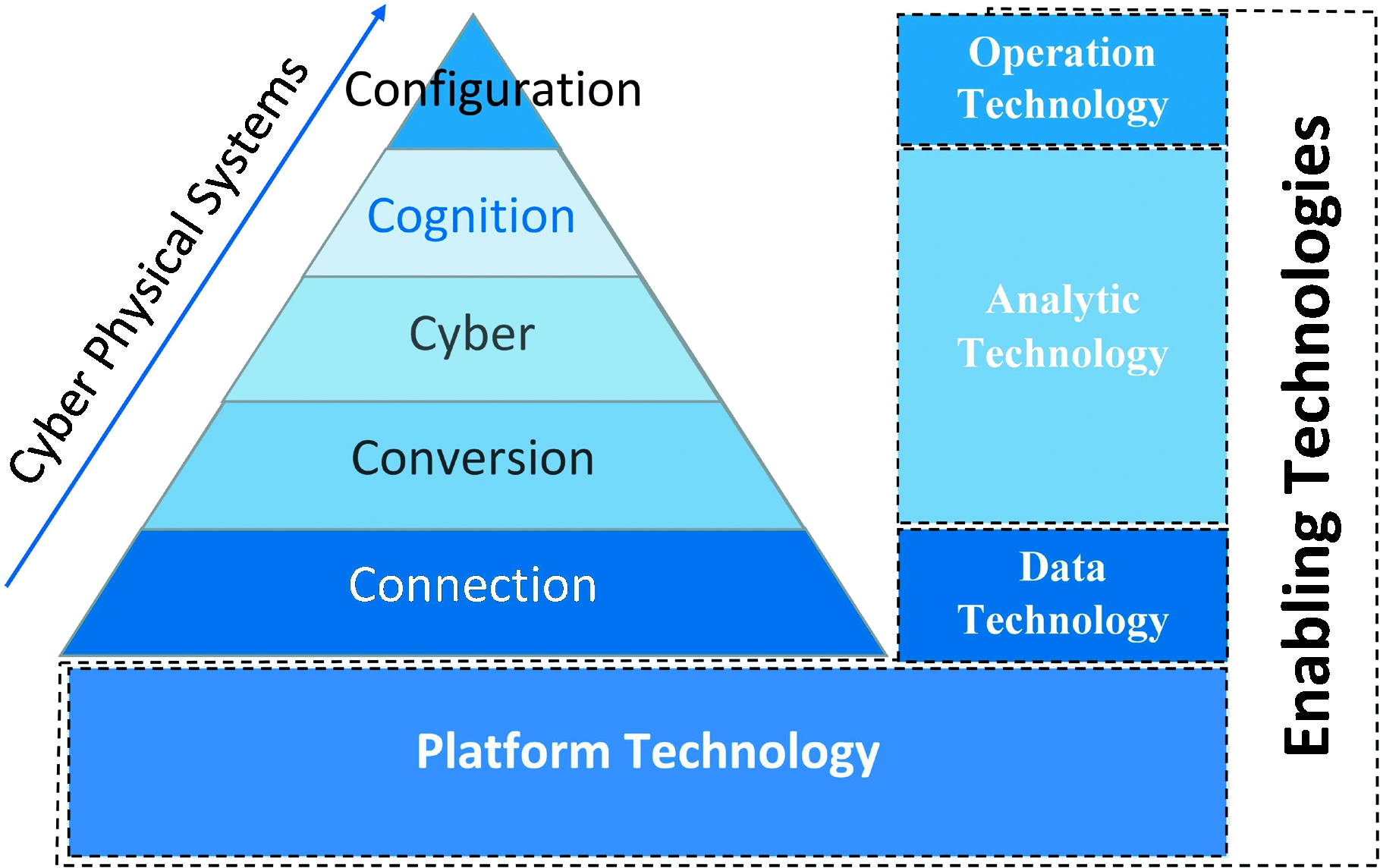
Fig.1 Enabling technologies for realization of CPS in manufacturing[10-11]
This article aims to provide a comprehensive understanding of the four enabling technologies for the implementation of Industrial AI in Industry 4.0-based manufacturing systems. The rest of the paper is organized as follows: Section 1 provides an elaborate understanding of the four enabling technologies of Industrial AI. In Section 2, opportunity spaces for Industrial AI for the industrial value transformation are discussed. Section 3 provides a case study on the health monitoring of machine tool spindles of CNC machines to showcase how this Industrial AI framework can be implemented in the real world. In Section 4, conclusions and suggested directions for the future are provided.
1 The Four Enabling Technologies for Industry 4.0
In the past, AI has provided numerous solutions and generated commercial value in many areas such as financial technology, security, e-commerce, and mobile payment[12-16]. At present, the challenge for adopting AI in the manufacturing sectors is not the technology itself. It focuses on how to produce application value and how to use it. AI education mostly teaches theory and tools while it is missing teaching how to solve problems. On the contrary, the aim of Industrial AI is to transform human-centered algorithmic thinking into system engineering. Industrial AI consists of five technical elements referred to as “ABCDE”, where A—Analytics deals with algorithms and their modeling in specific scenarios with specific objectives; B—Big Data: focus should be in managing the “3B” challenges of big data, namely broken data (data integrity), bad quality, and background (context and domain of data); C—Computational Platforms: intelligence needs to be embedded in equipment level using various available computational platforms such as cloud computing, edge computing, and fog computing; D—Domain knowledge and engineering experience about the mechanisms, process flow, system engineering etc. is required to understand the problem and focus the power of Industrial AI into solving it; E—Evidence reflects the current state of the system and the insights that support decision making.
1.1 Data Technologies(DT)
In the manufacturing domain, each step generates unique data every time. These unique steps in individual processes can cumulatively generate gigabytes of valuable data. Data can be generated at either component level, machine-level or the shop-floor, which can be broadly divided as structured and unstructured data. Data generated by manufacturing usually comes from a variety of sources and can be classified according to the following categories.
(1)Sensor data: it is collected from the built-in sensors such as cutting force[17], vibration[18-20], acoustic emission[21], temperature[22], current[23] etc., which monitors and reports the real-time performance of the machine. Many of these signals can be acquired directly through the machine-controller as well.
(2)Shop floor data: it is related to the production count, quality count, inventory level monitoring, factory logistics, operating conditions, expert estimates etc. For shop floor data, RFID (radio frequency identification) enables the automatic identification, tracking, management of materials, inventory, production and order dispatching. Other examples include the vision sensors for human-robot interaction, a digital pen and the object memory server (OMS) to label RFID chips, smart glove, 3D cameras, and touch, gesture-based or physical content interaction leveraging devices such as smartphones and tablets.
(3)Enterprise/Management data: it is related to production planning, order dispatching, sales, marketing, and financial management. For the management data, software like enterprise resource planning(ERP), supply chain management(SCM), customer relationship management(CRM) and product lifecycle management(PLM) are being integrated together to bind data from research, production, development, service, decision, business, customer and so on.
Fig.2 evaluates some of the data types in manufacturing based on the volume, variety, and velocity. All three dimensions are graded in the range of low, medium or high. Fig.2 also lists some of the common examples of data acquisition modes. It must be noted that data technology forms the initial stage for implementation of Industrial AI, in which the equipment, whose data is needed, is chosen and it allows for the successful procurement of relevant data through various channels. And therefore, it becomes a co-enabler of the “smart connection” step in the 5C architecture.
1.2 Analytics Technologies(AT)
Sensors and data acquisition systems in the data technology implementation phase would provide abundant data that needs to be analyzed to extract meaningful information out of it. Analytics plays the role of the interface between the physical world and the cyber world. Data-driven modeling uncoversthe hidden patterns, the unknown correlations, and other useful information from the manufacturing systems and integrates the obtained information with other technologies to improve the productivity and innovation. These hidden patterns and valuable events in the manufacturing process can be memorized, learned, and processed by AI technologies into actionable and insightful information for smart manufacturing.
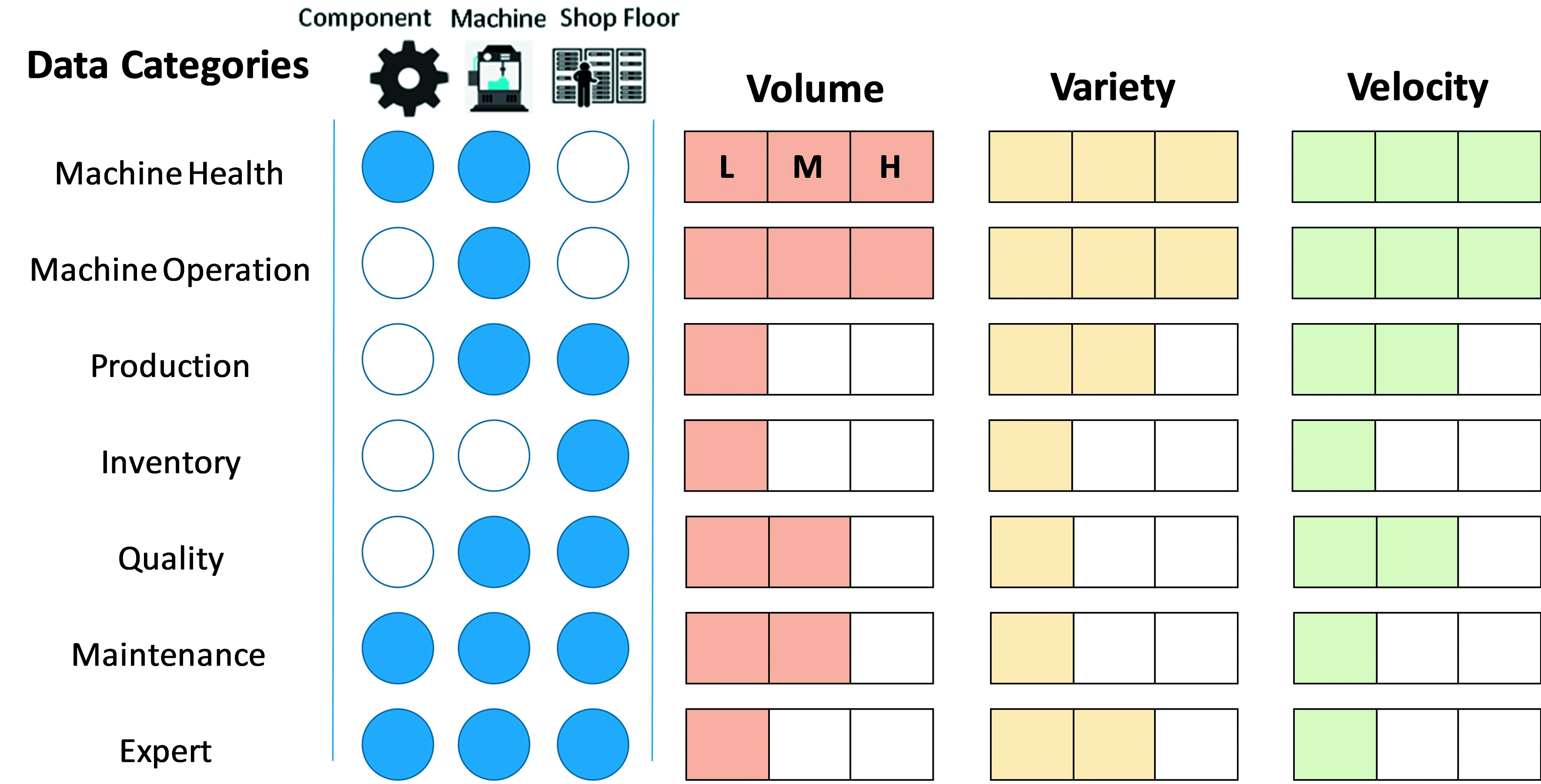
Fig.2 Dimensional evaluation of some of the data types in manufacturing
Although machine learning and AI techniques contribute mostly to analytics technology, different conduct is required for Industrial AI. As discussed in Section 1, “ABCDE” can be used to summarize the characteristicses of the Industrial AI technologies, where “ABCDE” represents analytics, big data, computational platform, domain knowledge, evidence, and feedback respectively. Traditional AI technologies emphasize more on the analytic technologies and the algorithms themselves while pay little attention on the domain knowledge and the evidence from the real application scenes[24]. The development of the traditional AI largely depends on computer science and technologies which treat the cloud as more powerful computing technology. There are a few basic processes which need to be considered for the analytic technologies:
(1)Data preprocessing: before feature extraction, data cleaning and data reduction is carried out to pre-process the large volume of raw data generated by various sensors so that the unified, accurate, and reliable data can be used to obtain ordered, simplified, and meaningful features for further modeling. Data pre-processing operations involve two primary tasks: data suitability assessment and data background identification/working regime identification. Data suitability assessment includes data quality checks[25], data cleaning operations, segmentation and resampling operations to be performed before using the data for analysis. Data background identification means working regime identification. This procedure becomes the co-enabler of the “data-to-information conversion” step in the 5C architecture.
(2)Feature engineering: once the necessary preprocessing steps on the raw data is performed, the data become ready to be converted into information. Some information can be easily extracted from the data using the simple feature extraction methods. However, with the increasing of the sampling rate and complex manufacturing processes, critical patterns or fault signatures are usually hidden in the raw measurements and the necessities to advance the feature extraction technologies.
(3)Building data-driven models: the extracted features require some high-performance data analytics to build a digital twin of a physical manufacturing device in the cyberspace. Data analytic tools coupled with a digital twin would aid to investigate the system performance, diagnose the machine health status, calculate the average throughput, average the work-in-process, and quantify their effects for continuous improvement. At this level, the similarity-based techniques are used to perform fleet-level degradation detection and prognostics using the signature and history of all the similar assets within the fleet. This procedure becomes the co-enabler of the “Cyber level” step in the 5C architecture.
(4)Data visualization: info-graphics are utilized in this level to deliver the extracted information regarding the health condition and machine fleet for the end-user to augment automated decision-making systems. This procedure becomes the co-enabler of the “cognition” step in the 5C architecture.
1.3 Platform Technologies(PT)
Platform technology(PT) is used at every step of the 5C architecture in Fig.3. PT serves as the carrier of all other enabling technologies of the industrial AI systems. PT supports the function of CPS architecture’s connection layer, conversion layer, and cyber layer. The major tasks of an industrial AI platform include digging the insight and evidence of some certain industry systems, establishing the predictive analysis models, providing the solutions or suggestions for the invisible problems, discovering the correlation between the complex incidents and accumulating the knowledge during the whole process for sustaining this intelligent system. Platform technologies, from both physical perspective and application perspective, are crucial for accomplishing such tasks. According to the recent service-oriented way of categorizing cloud technologies[26], PT can be categorized into three level of services: infrastructure as a service (IaaS), cloud as a service (CaaS), and solution as a service (SaaS). Cloud-based design and manufacturing(CBDM) is conceptually used among academic journals and industrial practices[27] in recent years. Industry cloud, sharing a similar structure with the general commercial cloud, has its unique characteristics due to the high variety and complexity of the industrial scenarios[28-29].
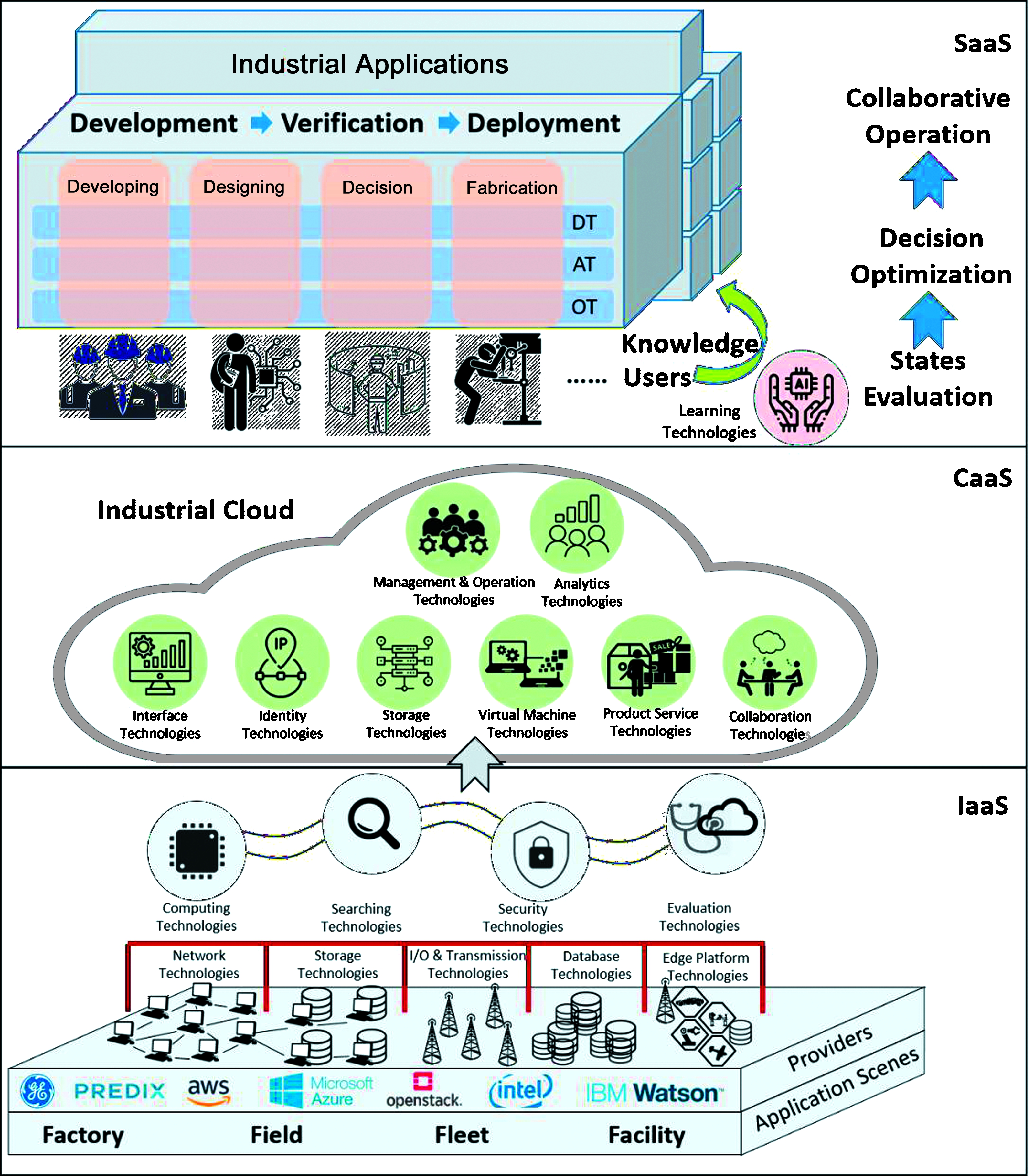
Fig.3 Implementation levels of IaaS, CaaS, and SaaS
1.3.1 PT in IaaS level
The idea of treating infrastructure as a service arises from the common requirement from different entities of computation, storage, management and information resources in an Industrial AI system. Platform technologies on IaaS level emphases the hardware aspect of certain functionalities. Major IaaS based technologies include computing technologies, network technologies, storage technologies, database technologies, searching technologies, transmission technologies, edge platform technologies, evaluation technologies, and security technologies. Factory, field, fleet, and facility are four common industrial application scenes where the IaaS level technologies are performed.
1.3.2 CaaS level technologies
Platform technologies on CaaS level emphases the logical and process aspect of certain functionalities in aspecific industry cloud. These technologies enable users to share resources within the industry cloud during dealing with industry applications. An industry cloud is a multi-functional network platform which uses industrial AI technologies to accomplish Industrial AI system tasks. Major CaaS based technologies include identity technologies, interface technologies, analytics technologies, storage technologies, product service technologies, collaboration technologies, and virtual technologies.
1.3.3 SaaS level technologies
Platform technologies on the level of SaaS, also known as value as a service (VaaS), focus on the resources and technologies needed by users for a specific industrial application. Industrial applications can be generally categorized into three classes: system state evaluation, decision optimization, and collaborative operation. Platform technologies on the SaaS level emphases the users’ participation for a specific industrial application so that the solutions can be made for problems, value can be brought to the industry and knowledge can be cumulated for the benign Industrial AI system development. PT on SaaS level is directly aimed at achieving two main goals for an Industrial AI system which are industrial application solutions and industrial knowledge gaining.
Industrial AI platform should be built with the concept of problem-oriented, customer-centered, big data backend, analytic tools supported, and value targeted. The general platform technologies described in this chapter are the basis for achieving the Industrial AI system functionalities. Different technologies should be chosen accordingly for different industrial application scenes.
1.4 Operations Technology(OT)
Operation technology, in conjunction with DT, AT, and PT, aims to optimize production throughout the manufacturing operations. It depends on the upgrading of the operational management methods: how to effectively transform the knowledge gained from the prediction model into operational maintenance and management decision-making and realizing the transformation from the experience-driven production to the data-driven production. There are multiple technologies developed and employed to achieve such goals including PLM, ERP, manufacturing execution systems(MES), CRM, and SCM. This section briefly describes the aforementioned technologies and the impact of their congregation in improving the manufacturing systems.
1.4.1 PLM
A product’s lifecycle includes design, production, services and logistics, maintenance and recycle. These phases are categorized as the beginning of life (BOL), middle of life (MOL), and end of life (EOL)[30]. By controlling a product through its lifecycle, PLM can significantly reduce the manufacturing costs. The ultimate goal of an Industrial AI-enabled PLM system is to create a closed-loop lifecycle design in which the data from all three phases are used effectively to derive the insight of manufacturing and optimize the manufacturing and product support decisions.
1.4.2 ERP
ERP systems bring value to an enterprise by sharing and transferring data and information across all units within an enterprise and from outside sources[31]. An ERP software system brings together data and information from manufacturing, sales, auditing, material, finance, human resources, distribution, and logistics, along with customers and suppliers. ERP is offered as a SaaS model, which significantly reduces the investment and management costs compared to an on-premise system.
1.4.3 MES
MES is designed to address the increasing need for lowering the cost of manufacturing and increasing the quality of the products. An MES consists of data collection, employee management, product tracking, quality control, and maintenance management that are targeted in efficiently tracking and monitoring the production process. In the era of Industry 4.0, the MES needs to be transformed in order to keep up with the challenges and opportunities with the new data, analytic and platform.
1.4.4 CRM
CRM is the process of bringing value and satisfaction to the customers and as a result building and maintaining profitable customer relationships. CRM consists of a series of procedures and strategies to systematically manage the customer relationships and keep track of the information related to customers. A modern CRM system can benefit significantly from the interacting with a PLM system, in which the product lifecycle data is used to achieve customers’ satisfaction. The knowledge gained from merging these two systems can be a driving force for improving the manufacturing process to ultimately create products which can bring the most value to customers.
1.4.5 SCM
SCM consists of synchronizing the demands and needs of the customer with the material suppliers and deals with the flow of material from the suppliers all the way to the customers. The chain consists of raw materials, supplier, manufacturing, distribution, sales, and customer. A modern SCM powered with AI can minimize the risks and lead to improve the supply chain sustainability.
2 Opportunity Spaces for Industrial AI for Industrial Value Transformation
In general, majority of the problems in manufacturing systems can be separated as visible problems and invisible problems. Machine degradation, lack of lubrication, loss of accuracy, wear and tear of parts, and resource waste are examples of problems in invisible space. Visible problems are often caused by the accumulations of invisible factors, such as component failure, equipment downtime, machine breakdowns, decrease in product quality. The traditional AI technology focuses and attempts to solve the visible problems and particularly tries to replace the human knowledge and judgment to complete the repetitive works. These AI models do not help human beings understand and assess the potential risks. However, the systematic implementation of Industrial AI can help predict the invisible problems and obtain the means to avoid and solve them to achieve the goal of creating carefree manufacturing. Following this idea, it can be further divided the opportunity space of industrial artificial intelligence into four parts as shown in Fig.4 and Fig.5.
(1)Part 1 is about solving the visible problems in the production system using continuous lean improvement of the production system and continuous standardization of the system.
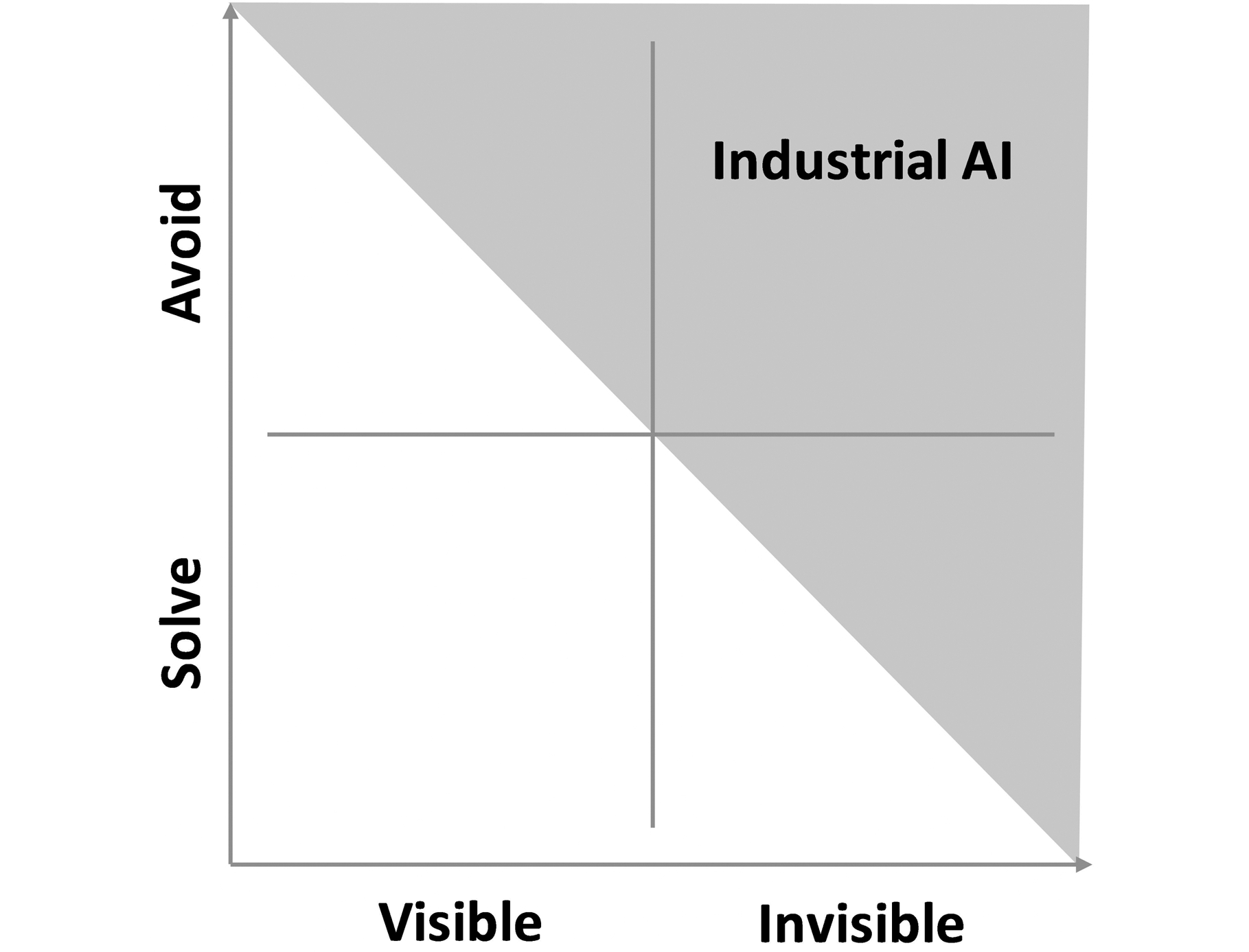
Fig.4 The four quadrants of Industrial AI opportunity space
(2)Part 2 is the second space that focuses on avoiding the visible problems, using data mining (such as 6-sigma diagnostic tools) to generate new knowledge.
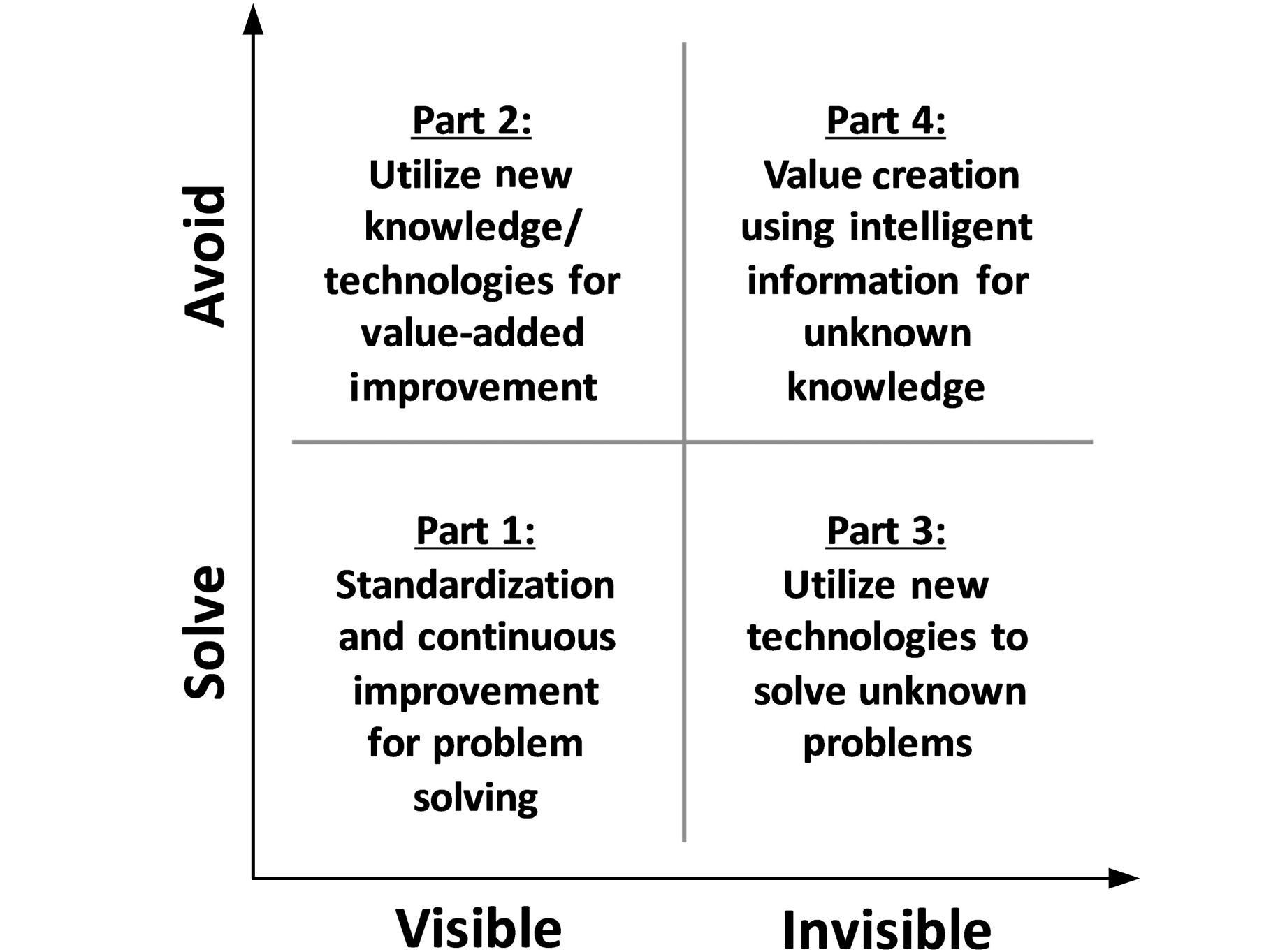
Fig.5 Industrial big data in industry 4.0
(3)Part 3 is the third space (dominance of invisible problems) that requires in-depth evidence, relevance and causality mining and the establishment of their relationships.
(4)The fourth space aims at finding and satisfying the invisible value gap in a dynamic and uncertain environment, and avoiding the influence of invisible factors.
Majority of manufacturing enterprises in the current scenario are dealing with improvement opportunities in the first and second spaces i.e. visible problems that need to be solved or need to be avoided. The problems in third and fourth spaces require a closed-loop integration of the manufacturing system industry chain to optimize the upstream and design side of the system to avoid invisible problems. Adoption of Industrial AI-based approach will aid in producing new value-creation opportunities and avoidance of the problems that haven’t even occurred yet. For example, a strategy like waiting for a mechanical cutting blade to break and then replace it would lie somewhere in the first and second space, and another strategy of using AI to analyze its lifespan and replacing it right before it breaks based on the vibrations or other data would come under the third and fourth space.
3 Case Study: Intelligent Bandsaw System
Successful implementation of Industrial AI requires a well-organized architecture that minimizes the end-to-end communication latency, provides the mobility supports and location awareness, and enhances the device-to-device interactions. In such a design, the devices would have access to multiple computational resources provided at the edge of the network, and the traditional cloud computing would support big data analytics and digital twin applications. Fog computing can bring significant advantages to this architecture by ①decreasing the network latency through the predictive analytics close to the edge devices; ②increasing the connectivity between the physical devices and the network; ③securing high volume data storage without the need for sending all raw data to the cloud; ④scalable networking due to high performance computing (HPC);⑤increasing instant and real-time data access; ⑥real-time big data analytics through parallel computing.
A conceptual framework describing the network is presented in Fig.6, where a fleet of three cutting machines is monitored in real-time, and the performance of cutting tools is assessed and reported to the machine operators for the blade replacement and necessary maintenance. Each machine is equipped with add-on vibration sensors and industrial controllers with the capacity of measuring data with 10 kHz sampling frequency and sending it to the fog layer for the primary analysis. In the fog layer, data preprocessing is performed to clean the data and separate different working regimes of the blades. Since the different blades may work under different operational conditions, it is necessary to perform all analysis for the similar regimes. After data preprocessing, the cleaned data and all supplementary analysis are bundled together and passed to the cloud layer for advanced analytics. The performance of each blade is compared with other similar blades through a similarity-based approach presented in the cloud layer. The representative information about the health condition of the blades, predicted the run to failure, together with the maintenance schedules are presented to the operators for the intelligent decision making.
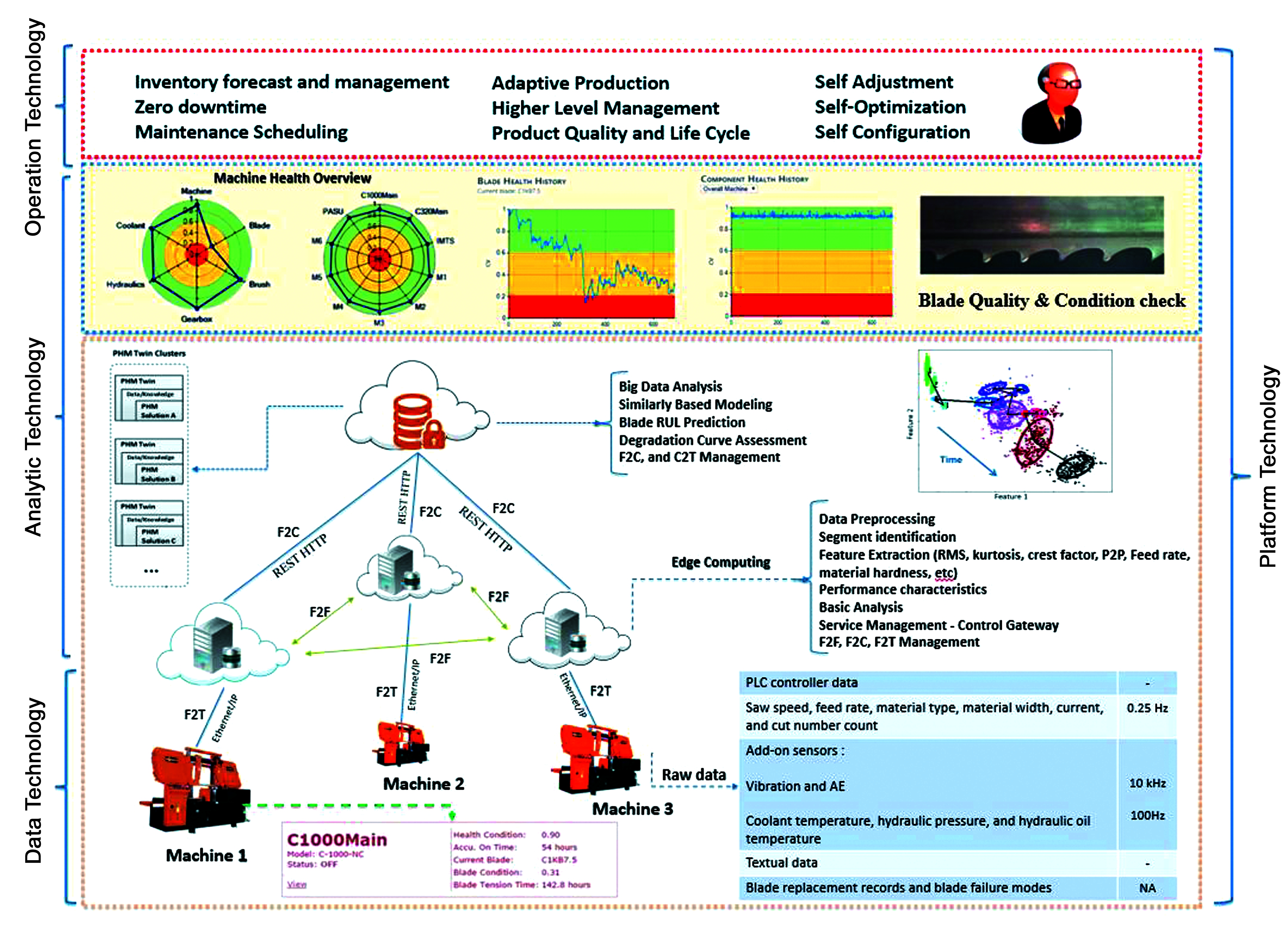
Fig.6 A case study of the application of Industrial AI in smart manufacturing systems
In this example, data technology corresponds to installing proper sensors on the right location and calibrating them to ensure data suitability and precision. The measured data from the sensors and controllers is accessed through the industrial-grade protocols such as MTconnect, ModBus, EtherNet IP, etc. Advanced communication technology (4G or 5G network) is used for parsing data to the fog layer. Analytic technology creates a guideline for converting this data to the actionable information where the advanced machine learning methods such as the convolutional neural networks(CNN) are used for blades’ real-time health assessment and predicting the remaining useful life(RUL). The health condition of blades along with other components is presented by using info-graphic tools where users can get access through mobile apps or web services. Finally, based on the presented information, users make decisions on the machine maintenance, blade replacement, spare parts purchase, and inventory management.
In general, different specifications of blades are used during the cutting process depending of the structural parts to be machined under consideration. In this case, information such as the degradation of the cutting blade and the remaining useful life estimation is invisible information. Work reduction, waste reduction, and worry-free manufacturing (3W’s) are important to achieve the goal of smart manufacturing. Among these, “worry” is an invisible concern because of the possibilities of product’s bad quality, customer dissatisfaction or business decline. Thus the major goal of Industrial AI is to create worry-free or care-free manufacturing systems(Fig.7).
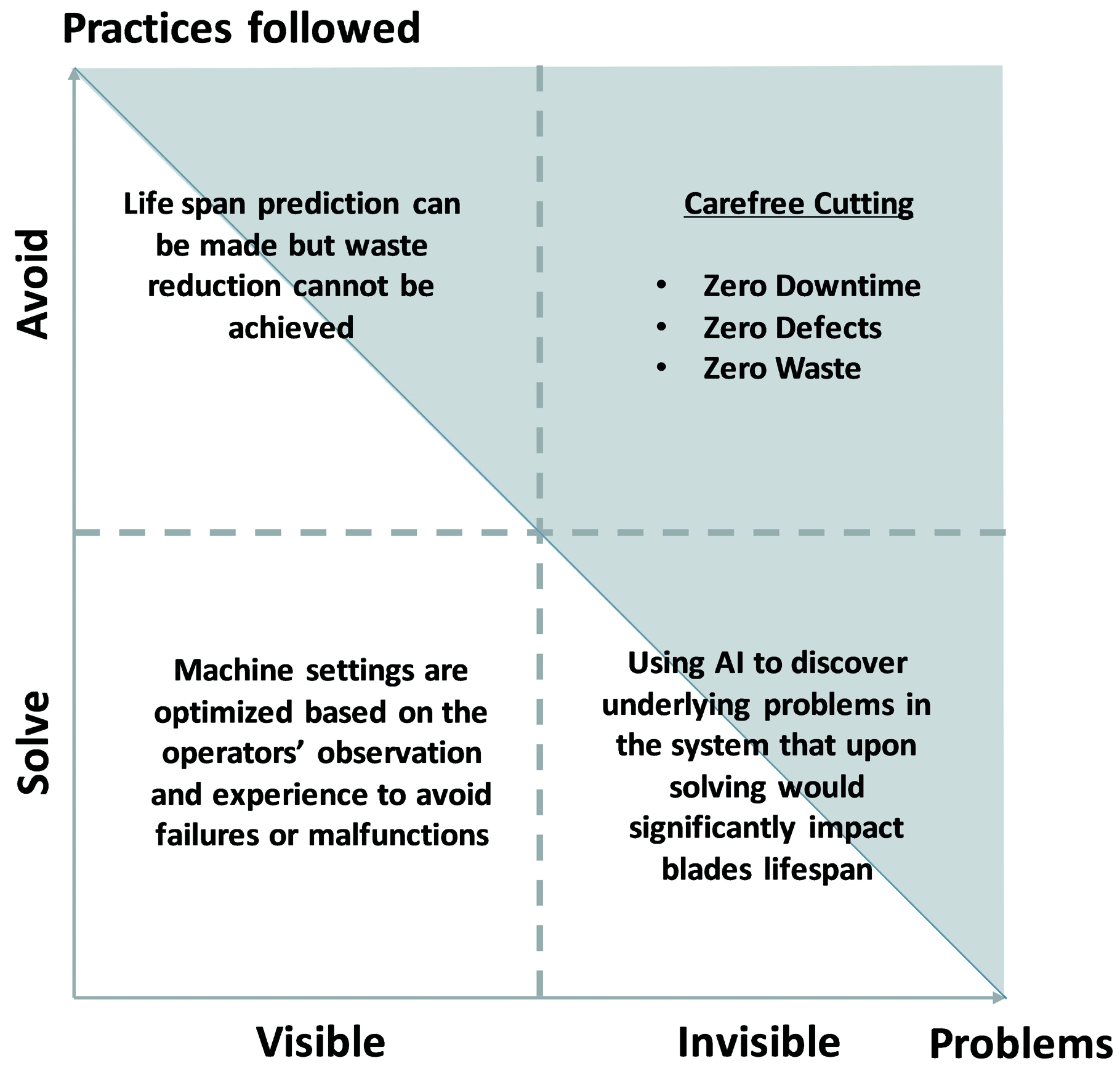
Fig.7 Opportunity space for Industrial AI in intelligent bandsaw system monitoring
A traditional approach may rely on operator’s experience through visual observations and the level of cutting sound to determine the blade’s health status (lower-left space). AI algorithms can be used to detect, diagnose, and predict the blade health for the problem avoidance (upper-left space). However, the issues such as data quality, data availability and reproducibility of results may hinder the reliable performance of the traditional AI algorithms and the implementation of worry and waste free manufacturing systems (upper-left space). New methods/techniques and more advanced adaptive AI modules can be utilized systematically to gain real-time and accurate blade health information to achieve work and waste reduction (lower-right space). Hence, the adoption of Industrial AI-based approach will aid in producing new value-creation opportunities in a dynamic and uncertain environment leading to carefree cutting systems (upper-right space).
4 Conclusions
Industry 4.0 initiative is trying to liberate the industrial processes and products from experience-oriented inheritance and moving towards the fact-based inheritance and protective systems. Though AI is expected to play a major role in this improvement, the general AI is highly focused on life, society, and financial aspects. On the contrary, Industrial AI is an intelligent system based on the industrial domain which pays attention to effectiveness, reliability, repeatability and the optimization of systems. Industrial AI is more focused and convergent, which aims at solving the specific industrial problems. It is expected that the proposed systematic framework for the Industrial AI would help professionals to tap invisible knowledge, provide autonomy to the industrial equipments to negotiate with each other and reconfigure themselves for flexible production and finally create greater value.
[1] CIFAR Pan-Canadian Artificial Intelligence Strategy[EB/OL].[2018-11-15]. https:∥www.cifar.ca/ai/ pan-canadian-artificial-intelligence-strategy.
[2] State Council Issued Notice of the New Generation Artificial Intelligence Development Plan[EB/OL]. [2017-04-08] http:∥www.gov.cn/zhengce/content/2017-07/20/content_5211996.htm.
[3] Strategie Künstliche Intelligenz der Bundesregierung[EB/OL]. [2018-11-15]. https:∥www.de.digital/DIGITAL/Redaktion/DE/Publikation/strategie-kuenstliche-intelligenz-der-bundesregierung.pdf?_blob=publicationFile&v=3.
[4] Accelerating America’s Leadership in Artificial Intelligence[EB/OL]. [2019-2-11]. White House, https:∥www.whitehouse.gov/articles/accelerating-americas-leadership-in-artificial-intelligence/.
[5] TAO F, QI Q, LIU A, et al. Data-driven Smart Manufacturing[J]. J. Manuf. Syst, 2018, 48: 157-169.
[6] XU L D, HE W, LI S. Internet of Things in Industries: a Survey[J]. IEEE Trans. Ind. Informatics, 2014, 10 (4): 2233-2243.
[7] LEE J, LAPIRA E, BAGHERI B, et al. Recent Advances and Trends in Predictive Manufacturing Systems in Big Data Environment[J]. Manufacturing Letters, 2013, 1(1): 38-41.
[8] ZHANG L, LUO Y, TAO F, et al. Cloud Manufacturing: a New Manufacturing Paradigm[J]. Enterp. Inf. Syst. , 2014, 8(2): 167-187.
[9] LEE J, BAGHERI B, KAO H A. A Cyber-physical Systems Architecture for Industry 4.0-based Manufacturing Systems[J]. Manufacturing Letters, 2015, 3: 18-23.
[10] LEE J, DAVARI H, SINGH J, et al. Industrial Artificial Intelligence for Industry 4.0-based Manufacturing Systems[J]. Manufacturing Letters, 2018, 18: 20-23.
[11] LEE J, SINGH J, AZAMFAR M. Industrial Artificial Intelligence[EB/OL]. [2019-2-11]. https:∥arxiv.org/vc/arxiv/papers/1908/1908.02150v1.pdf.
[12] BAHRAMMIRZAEE A. A Comparative Survey of Artificial Intelligence Applications in Finance: Artificial Neural Networks, Expert System and Hybrid Intelligent Systems[J]. Neural Computing and Applications, 2010, 19(8): 1165-1195.
[13] VON AHN L, BLUM M, HOPPER N J et al. CAPTCHA: Using Hard AI Problems for Security[C]∥International Conference on the Theory and Applications of Cryptographic Techniques. Warsaw, 2003: 294-311.
[14] LAU R Y. Towards a Web Services and Intelligent Agents-based Negotiation System for B2B eCommerce[J]. Electronic Commerce Research and Applications, 2007, 6(3): 260-273.
[15] DIRICAN C. The Impacts of Robotics, Artificial Intelligence on Business and Economics[J]. Procedia-Social and Behavioral Sciences, 2015, 195: 564-573.
[16] LEE J, AZAMFAR M, SINGH J. A Blockchain Enabled Cyber-physical System Architecture for Industry 4.0 Manufacturing Systems[J]. Manufacturing Letters, 2019, 20: 34-39.
[17] ZHU K, HONG G S, WONG Y S, et al. Cutting Force Denoising in Micro-milling Tool Condition Monitoring[J]. Int. J. Prod. Res. , 2008, 46(16): 4391-4408.
[18] YEN G, LIN K. Wavelet Packet Feature Extraction for Vibration Monitoring[J]. IEEE Trans. Ind. Electron., 2000, 47(3): 650-667.
[19] PATRA K, PAL S K, BHATTACHARYYA K. Fuzzy Radial Basis Function(FRBF) Network Based Tool Condition Monitoring System Using Vibration Signals[J]. Mach. Sci. Technol., 2010, 14(2): 280-300.
[20] SINGH J, DARPE A K, SINGH S P. Bearing Damage Assessment Using Jensen-Rényi Divergence Based on EEMD[J]. Mechanical Systems and Signal Processing, 2017, 87: 307-339.
[21] SUN J, HONG G S, RAHMAN M, et al. Identification of Feature Set for Effective Tool Condition Monitoring by Acoustic Emission Sensing[J]. Int. J. Prod. Res., 2004, 42: 901-918.
[22] KUO H, MEYER K, LINDLE R, et al. Estimation of Milling Tool Temperature Considering Coolant and Wear[J]. J. Manuf. Sci. Eng.,2012,134:031002.
[23] AZAMFAR M, JIA X, PANDHARE V, et al. Detection and Diagnosis of Bottle Capping Failures Based on Motor Current Signature Analysis[J]. Procedia Manufacturing, 2019, 34: 840-846.
[24] PANDHARE V, SINGH J, LEE J. Convolutional Neural Network Based Rolling-element Bearing Fault Diagnosis for Naturally Occurring and Progressing Defects Using Time-Frequency Domain Features[C]∥2019 Prognostics and System Health Management Conference. Qingdao, 2019: 320-326.
[25] YANG Q, SINGH J, LEE J. Isolation-based Feature Selection for Unsupervised Outlier Detection[J/OL]. Proceedings of the Annual Conference of the PHM Society, 2019, 11(1). https:∥doi.org/10.36001/phmconf.2019.v11i1.824.
[26] WU Y, HE F, ZHANG D, et al. Service-oriented Feature-based Data Exchange for Cloud-based Design and Manufacturing[J]. IEEE Transactions on Services Computing, 2015, 11(2): 341-353.
[27] WU D, ROSEN D W, WANG L, et al. Cloud-based Manufacturing: Old Wine in New Bottles?[J]. Procedia CIRP, 2014, 17: 94-99.
[28] LEE J, ARDAKANI H D, YANG S, et al. Industrial Big Data Analytics and Cyber-physical Systems for Future Maintenance & Service Innovation[J]. Procedia CIRP, 2015, 38: 3-7.
[29] WU D, TERPENNY J, GENTZSCH W. Cloud-based Design, Engineering Analysis, and Manufacturing: a Cost-benefit Analysis[J]. Procedia Manufacturing, 2015, 1: 64-76.
[30] LI J, TAO F, CHENG Y, et al. Big Data in Product Lifecycle Management[J]. Int. J. Adv. Manuf. Technol., 2015, 81(1/4): 667-684.
[31] ELMONEM M, NASR E, GEITH M. Benefits and Challenges of Cloud ERP Systems—a Systematic Literature Review[J]. Futur. Comput. Informatics J., 2016, 1(1/2): 1-9.
